To install a barn door track, start by measuring and marking the desired placement on the wall. Then, attach the track using screws or mounting brackets, ensuring it is level and secure.
Barn doors have become increasingly popular in both residential and commercial spaces due to their rustic charm and space-saving benefits. Installing a barn door track may seem like a daunting task, but with the right tools and guidance, it can be a straightforward process.
We will provide you with a step-by-step guide on how to install a barn door track, allowing you to enhance the aesthetic appeal of your space while maximizing functionality. Whether you’re a DIY enthusiast or a beginner, this guide will equip you with the knowledge and confidence to transform your ordinary door into a stunning barn door. So, let’s get started!
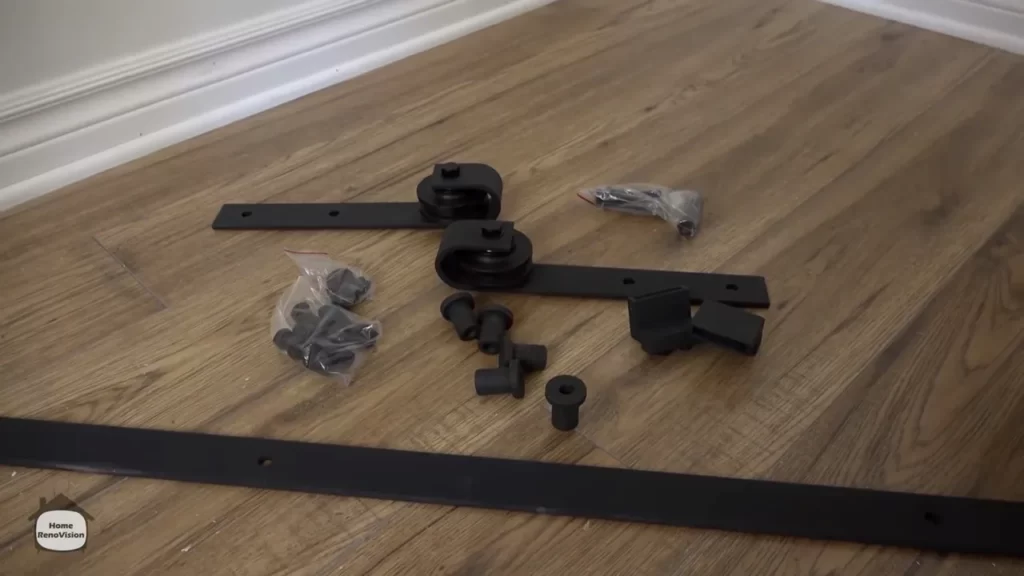
Choosing The Right Barn Door Track
When it comes to installing a barn door, choosing the right track is crucial for both functionality and aesthetics. The barn door track not only supports the weight of the door but also determines how smoothly it opens and closes. With various factors to consider and different types of tracks available, it’s important to make an informed decision. In this section, we will explore the factors to consider when selecting a barn door track, discuss the different types of tracks, and compare the pros and cons of various track materials.
Factors to Consider When Selecting a Barn Door Track
Before purchasing a barn door track, it’s essential to consider a few key factors. These factors will help ensure that the track you choose is suitable for your specific requirements. Here are some important factors to keep in mind:
- Weight Capacity: The first factor to consider is the weight capacity of the track. You need to determine the weight of your barn door and make sure that the chosen track can handle it. Choosing a track with a higher weight capacity than necessary is always a safer option.
- Door Size: The size of your barn door will also dictate the size of the track you need. Measure the width and height of your door to ensure that the track length matches accordingly.
- Mounting Options: Different barn door tracks offer various mounting options. Some tracks mount to the wall, while others mount to the ceiling. Consider your space and the desired aesthetic to determine which mounting option will work best for you.
- Style: The style of the barn door track should complement the overall design of your space. Whether you prefer a rustic, modern, or industrial look, there are tracks available to match your desired style.
Exploring Different Types of Barn Door Tracks
Now that you are familiar with the factors to consider, let’s take a look at the different types of barn door tracks:
| Type | Description |
|---|---|
| Top-Mount | These tracks are mounted to the top of the door frame, allowing the door to hang from the track. They are a popular choice for their sleek and minimalist design. |
| Wall-Mount | Wall-mounted tracks attach to the wall above the doorway, accommodating doors that slide alongside the wall. They are ideal for spaces with limited headroom. |
| Ceiling-Mount | As the name suggests, ceiling-mounted tracks are affixed to the ceiling, giving the door a floating appearance. These tracks are often used when there is not enough wall space. |
Comparing the Pros and Cons of Various Track Materials
Lastly, let’s compare the pros and cons of various materials used in barn door tracks:
- Steel: Steel tracks are durable and offer excellent weight-bearing capacity. They are also resistant to warping and provide a smooth sliding experience. However, they may be more expensive compared to other materials.
- Aluminum: Aluminum tracks are lightweight and corrosion-resistant, making them suitable for humid environments. They are also cost-effective, but may not support heavy doors as effectively as steel tracks.
- Wood: Wood tracks have a natural and rustic appeal. They are typically used for decorative purposes rather than practical functionality, as they may not have the same durability and weight capacity as other materials.
By considering these factors, exploring different types of tracks, and comparing the pros and cons of various track materials, you’ll be well-equipped to choose the ideal barn door track for your project. Remember to prioritize both functionality and style to create a beautiful and functional barn door installation.
Installing The Barn Door Track Hardware
If you want to give your home a touch of rustic charm and create a unique focal point, installing a barn door can be the perfect solution. But before you can hang your barn door, you first need to install the barn door track hardware. In this article, we will guide you through the process of installing the barn door track hardware step by step. So grab your tools and let’s get started!
Gathering the necessary tools and materials
Before you begin the installation process, you need to make sure you have all the necessary tools and materials at hand. Here is a list of what you will need:
| Tools | Materials |
| DrillTape measureScrewdriverLevelPencil | Barn door trackTrack bracketsScrewsAnchors |
Measuring and marking the installation area
Now that you have gathered all the necessary tools and materials, it’s time to measure and mark the installation area. Start by measuring the width of the door opening to determine the length of the barn door track. Make sure to leave a few inches of overlap on each side to allow the door to slide smoothly.
Using a pencil and level, mark the desired height of the track on the wall. This will depend on the height of your barn door and personal preference. Ensure the marks are level before moving on to the next step.
Preparing the surface for installation
Before you mount the track brackets, it’s important to prepare the surface for installation. If you are working with drywall, use a stud finder to locate the studs in the wall. Mark the stud locations on the wall with a pencil.
If you are not able to mount the brackets directly into the studs, you will need to use anchors. Drill pilot holes for the anchors using a drill bit that matches the size of the anchors. Insert the anchors into the holes and then secure the brackets to the wall using screws.
Mounting the track brackets securely
Now it’s time to mount the track brackets securely to the wall. Position the brackets on the marks you made earlier, ensuring they are level and aligned. Use a drill or screwdriver to secure the brackets to the wall, making sure the screws are tightly fastened.
Once the track brackets are securely mounted, you can then attach the barn door track to the brackets. Carefully lift the track and slide it into the brackets, ensuring it is properly aligned and centered. Secure the track to the brackets using the screws provided.
With the barn door track hardware successfully installed, you are one step closer to completing your barn door installation. In the next article, we will guide you through the process of hanging the barn door and making any necessary adjustments for smooth operation. Stay tuned!
Attaching The Barn Door To The Track
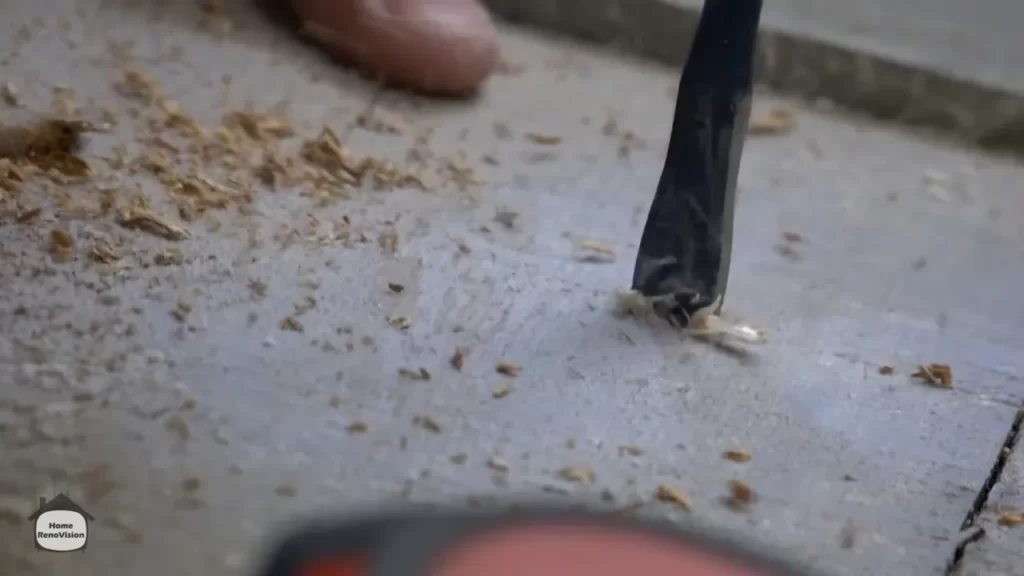
Once you have successfully installed the barn door track, the next step is to attach the barn door to the track. This crucial part of the installation process requires careful attention to ensure a secure fit and smooth operation of the barn door.
Installing the door hangers onto the door
The first step in attaching the barn door to the track is to install the door hangers onto the door itself. These door hangers will serve as the connection points between the door and the track, allowing the door to glide smoothly along the track.
To install the door hangers, you will need to:
- Measure and mark the appropriate placement for the door hangers on the top edge of the door.
- Align the door hangers with the marked spots and attach them securely to the door using the provided screws or bolts.
- Ensure that the door hangers are level and positioned evenly to guarantee proper alignment with the barn door track.
Hanging the barn door onto the track
Once the door hangers are securely attached to the door, it is time to hang the barn door onto the track. This step requires precision and care to ensure that the door is properly aligned and balanced on the track.
To hang the barn door onto the track, follow these steps:
- With the help of another person, lift the barn door and position the door hangers onto the corresponding slots in the barn door track.
- Lower the door onto the track, making sure that the door hangers fit snugly into the slots.
- Test the door’s movement by sliding it along the track to ensure that it glides smoothly and without any obstructions.
Adjusting the door alignment and level
After hanging the barn door onto the track, it is essential to adjust the door’s alignment and level to ensure that it hangs correctly and operates smoothly. This step is crucial for both aesthetic purposes and the functionality of the barn door.
To adjust the door alignment and level, you will need to:
- Use a level to check if the door is perfectly vertical. If not, use shims or spacers to adjust the position of the door hangers accordingly.
- Make minor adjustments to the door hangers by loosening the screws or bolts and sliding them slightly, allowing the door to hang straight and align with the track.
Ensuring smooth operation of the door
Finally, take the necessary steps to ensure that the barn door operates smoothly along the track. This will help prevent any unwanted noises, sticking, or wobbling of the door.
To ensure smooth operation of the door, consider the following:
- Check the track for any debris or obstacles that may hinder the door’s movement. Clean the track if necessary.
- Apply a lubricant or silicone spray to the track to reduce friction and ensure smooth gliding of the barn door.
- If needed, adjust the tightness of the door hangers by tightening or loosening the screws or bolts, ensuring a balanced and effortless movement of the door.
By following these steps and taking the time to ensure proper attachment of the barn door to the track, you can enjoy a perfectly functioning and visually pleasing addition to your space.
Troubleshooting Common Installation Issues
Once you’ve decided to install a barn door track in your home, you may encounter some common installation issues that require troubleshooting. These issues can include track misalignment problems, door sticking or dragging issues, door swinging or swaying problems, and noisy or squeaky tracks. In this section, we’ll explore how to identify and resolve these issues to ensure a smooth and functional barn door installation.
Identifying and Resolving Track Misalignment Problems
If you notice that your barn door track is misaligned, it’s essential to address this issue promptly. Track misalignment can lead to uneven door movement and potential damage to the door and track system. To identify track misalignment, check if the door fails to slide smoothly or if there are any visible gaps between the door and the track.
To resolve track misalignment problems, follow these steps:
- Inspect the track and ensure it is securely fastened to the wall or mounting surface.
- Use a level to check if the track is perfectly horizontal.
- If the track is not level, adjust the mounting brackets or shims to achieve a level position.
- Test the door’s movement after making adjustments to ensure it slides smoothly without any obstructions.
Troubleshooting Door Sticking or Dragging Issues
If your barn door is sticking or dragging when attempting to open or close it, there are a few possible causes for this issue. It could be due to an uneven floor, improper installation of the bottom door guide, or the presence of debris or obstacles in the track.
To troubleshoot sticking or dragging issues, try the following:
- Inspect the floor for any unevenness and consider adding shims to create a level surface for the door to slide on.
- Check the bottom door guide and ensure it is properly installed and aligned with the track.
- Clean the track thoroughly to remove any dirt, dust, or debris that may be hindering the door’s movement.
Addressing Issues with Door Swinging or Swaying
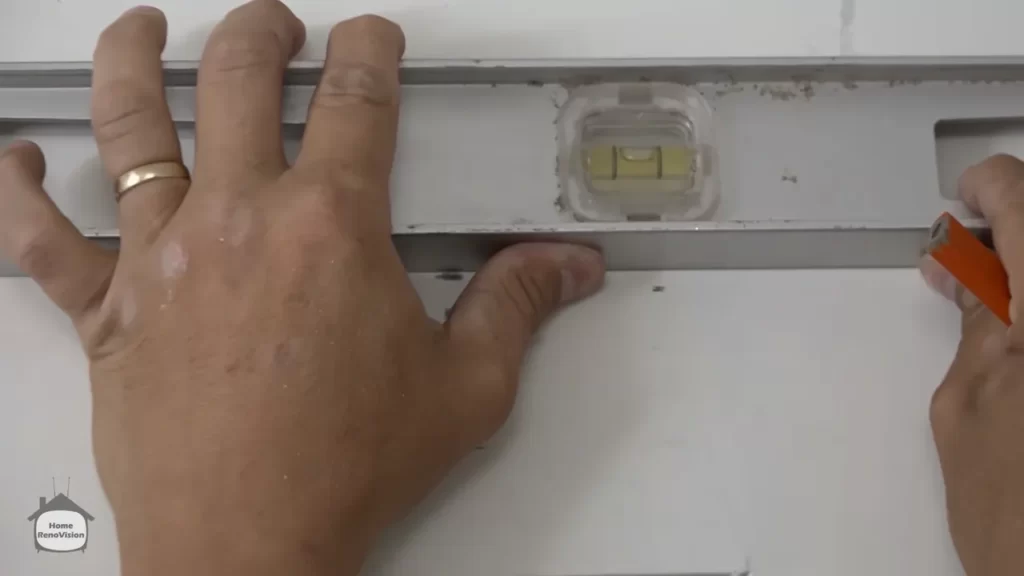
If your barn door swings or sways excessively when in motion, it can be both annoying and potentially hazardous. Excessive swinging or swaying can occur due to improper alignment, inadequate structural support, or imbalanced weight distribution.
To address issues with door swinging or swaying, follow these steps:
- Check the alignment of the track and make sure it is correctly installed and level.
- Ensure that the door is properly attached to the track hangers and securely fastened.
- Consider installing additional support brackets or a floor guide to stabilize the door and prevent excessive movement.
Dealing with Noisy or Squeaky Barn Door Tracks
Noisy or squeaky barn door tracks can be quite bothersome and disrupt the tranquility of your space. These noises typically occur due to friction between the door and the track, lack of lubrication, or loose track components.
To deal with noisy or squeaky barn door tracks, follow these steps:
- Inspect the track and tighten any loose components, such as screws or bolts.
- Apply a suitable lubricant, such as silicone spray or powdered graphite, to reduce friction and noise.
- Test the door’s movement after lubrication to ensure the issue has been resolved.
By troubleshooting these common installation issues and implementing the suggested solutions, you can ensure a successful and hassle-free barn door track installation. Enjoy the functionality and aesthetic appeal of your new barn door!
Adding Finishing Touches
Now that you have successfully installed your barn door track, it’s time to add those finishing touches that will take your project to the next level. These final steps will not only enhance the functionality of your barn door but also add a touch of style and personality to your space. In this section, we will discuss three important aspects of adding finishing touches: installing door guides to prevent swinging, applying a protective finish to the barn door, and enhancing the aesthetic appeal with decorative hardware. Let’s dive in!
Installing Door Guides to Prevent Swinging
One of the common challenges with barn doors is their tendency to swing back and forth when opened or closed. To prevent this, it’s crucial to install door guides. These guides help keep the door in place, ensuring a smooth and stable operation. There are various types of door guides available in the market, such as floor-mounted guides, wall-mounted guides, and adjustable guides.
When installing a floor-mounted guide, ensure that it is positioned correctly to align with the bottom edge of the barn door. This will provide the necessary support, preventing the door from swinging. If you prefer a wall-mounted guide, make sure to attach it securely to the wall, aligning it with the door’s movement path.
Remember, installing door guides is an essential step in achieving a hassle-free and functional barn door system. Choose a guide that complements your door and follow the manufacturer’s instructions for installation.
Applying a Protective Finish to the Barn Door
Applying a protective finish not only adds to the visual appeal of your barn door but also helps prolong its lifespan. A protective finish acts as a shield, safeguarding the wood from moisture, dirt, and other external elements. Before applying the finish, prepare the surface by sanding it gently and ensuring it is clean and free from dust.
When selecting a protective finish, consider the natural beauty of the wood and your desired outcome. There are various options to choose from, including clear varnish, wood stain, or paint. Each option offers a different aesthetic and level of protection.
For a rustic and natural look, you may opt for a clear varnish that allows the grain of the wood to show through. If you prefer a richer tone, a wood stain can provide depth and character to your barn door. Alternatively, if you want to add a pop of color, you can choose from a range of paint options.
Apply the protective finish carefully, following the manufacturer’s instructions. Multiple coats may be required, depending on the desired level of protection and finish. Allow each coat to dry completely before applying the next one.
Enhancing the Aesthetic Appeal with Decorative Hardware
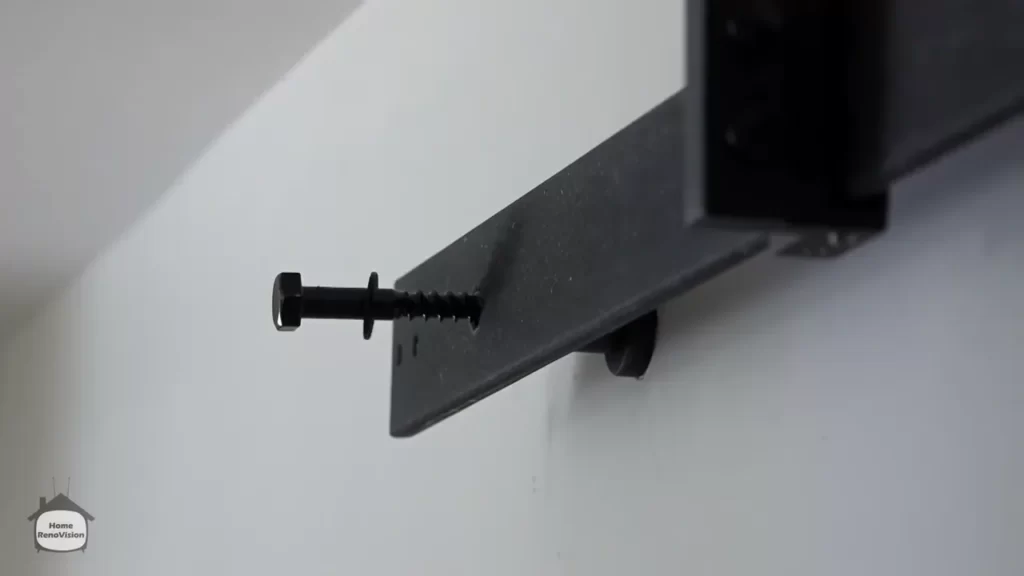
To add that personal touch and enhance the overall aesthetic appeal of your barn door, consider incorporating decorative hardware. Decorative hardware not only serves as a functional element but also makes a statement and complements the style of your space.
There are various types of decorative hardware options available, such as door handles, pulls, hinges, and strap hinges. Choose hardware that suits the design and theme of your barn door. If you want to achieve a rustic look, opt for wrought iron or antique brass hardware. For a modern and sleek appearance, consider stainless steel or black matte hardware.
Properly installing decorative hardware is essential to ensure its functionality and longevity. Align the hardware correctly with the door, using the manufacturer’s guidelines. Securely fasten the hardware, ensuring that it is tight and stable.
By adding decorative hardware, you can elevate the overall look of your barn door, making it a captivating focal point in your space.
Now that you have learned about installing door guides, applying a protective finish, and enhancing the aesthetic appeal with decorative hardware, you are ready to put the final touches on your barn door installation project. These additional steps will not only enhance the functionality of your barn door but also reflect your personal style.
Maintaining And Caring For Your Barn Door Track
Proper maintenance and regular care of your barn door track are essential to ensure its smooth operation and longevity. By following a few simple steps, you can keep your barn door track in excellent condition and avoid any potential issues down the line. In this section, we will discuss the key aspects of maintaining and caring for your barn door track.
Regular cleaning and lubrication of the track
To keep your barn door track running smoothly, it’s important to clean it regularly and lubricate it as needed. Dust, dirt, or debris can accumulate on the track over time, causing friction and hindering the door’s movement. To clean the track:
- Start by removing any loose dirt or debris with a brush or vacuum cleaner.
- Use a mild detergent mixed with water to wipe down the track, paying attention to any areas with stubborn dirt.
- Dry the track thoroughly with a clean cloth.
After cleaning, it’s time to lubricate the track. Applying a thin layer of lubricant will help reduce friction and ensure smooth door movement. You can use a silicone-based lubricant or a specialized barn door track lubricant. Apply the lubricant to the track and wipe off any excess to prevent buildup. Regular cleaning and lubrication will significantly extend the lifespan of your barn door track.
Checking for loose screws or damaged parts
Periodically inspect your barn door track for any loose screws, bolts, or damaged parts. Over time, vibrations or heavy usage can cause these components to loosen or break. By doing a quick check, you can identify and address these issues before they cause further damage. Here’s how:
- Visually inspect the track to ensure all screws and bolts are tightly secured. Use a screwdriver or wrench to tighten any loose screws.
- Check for any signs of damage, such as bent sections or missing parts. If any damage is detected, replace the affected components as soon as possible.
Regularly checking for loose screws or damaged parts will help maintain the stability and functionality of your barn door track.
Repairing minor issues yourself
For minor issues with your barn door track, you can often resolve them yourself without the need for professional assistance. Some common minor issues include:
- Uneven door alignment
- Squeaking or noisy operation
- Sticking or jamming of the door
To address these issues:
- Adjust the rollers or hangers to ensure even door alignment.
- Apply a suitable lubricant to the rollers or other moving parts to eliminate squeaking or noise.
- Remove any obstructions or debris in the track that may be causing the door to stick or jam.
By taking these steps, you can often resolve minor issues and keep your barn door track in optimal condition.
Seeking professional help for major repairs
While minor issues can often be resolved on your own, it’s important to seek professional help for major repairs or if you are unsure about the problem. Major issues may include:
- Severe damage to the track
- Complete door misalignment
- Difficulty in opening or closing the door
If you encounter any of these problems or other significant issues, it’s best to consult a professional barn door track installer or repair service. They have the expertise and proper tools to handle complex repairs effectively and safely. Seeking professional help will ensure that your barn door track remains sturdy and functional.
By following these essential maintenance tips, you can keep your barn door track in top-notch condition for years to come. Regular cleaning, checking for loose screws, addressing minor issues, and seeking professional help when needed will help prolong the life of your barn door track and ensure smooth operation.
Additional Tips And Considerations
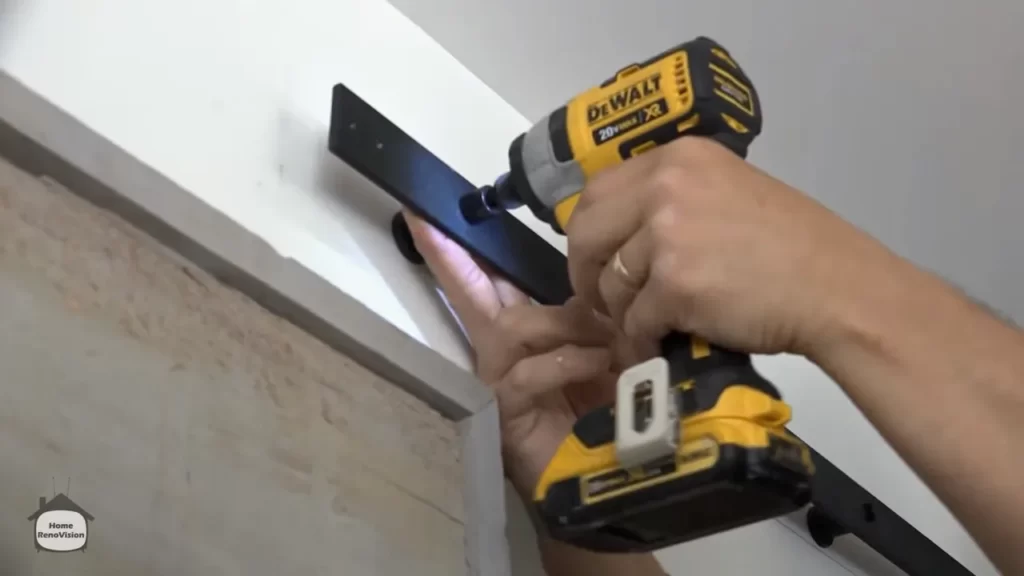
Installing a barn door track can be a fantastic way to add style and functionality to your space. However, there are a few additional tips and considerations to keep in mind to ensure a successful installation. From safety precautions to customizing the track to fit your needs and incorporating security measures, these elements will contribute to a smooth and secure installation process.
Safety Precautions During Installation
While installing a barn door track may seem straightforward, it’s crucial to prioritize safety during the process. Here are some essential safety precautions to bear in mind:
- Wear appropriate safety gear, such as goggles and gloves, to protect yourself from any potential hazards.
- Ensure the area where you’ll be working is well-lit to avoid accidents or mishaps.
- Have a second person present to assist you, especially when handling heavier components or when mounting the track.
- Use high-quality tools specifically designed for this type of installation to minimize the risk of accidents.
- Read and follow the manufacturer’s instructions carefully to ensure proper installation and avoid any mishaps.
- Double-check the track’s weight capacity to ensure it can support the weight of your barn door.
Customizing the Barn Door Track to Fit Your Needs
No two spaces are alike, and customization is often necessary to ensure the barn door track fits perfectly. Here’s how you can tailor the track according to your specific requirements:
- Measure the width of the door frame accurately to determine the correct length of track needed.
- If the track is too long, use a hacksaw to cut it down to size. Ensure you have a clean and straight cut to avoid any installation difficulties.
- If the track is too short or you need additional flexibility, consider using a track extension kit to achieve the desired size.
- Don’t forget to consider the door’s height as well. Make sure the track and hangers are adjusted accordingly to allow the door to slide smoothly without any obstructions.
- Paint or stain the track to match your door or overall decor. This customization touch can help create a cohesive and visually appealing look.
Incorporating Security Measures for Added Peace of Mind
Ensuring the security of your barn door track is essential, especially if it leads to valuable spaces. Consider these security measures for added peace of mind:
- Install a floor guide to prevent the door from swinging or swaying excessively, ensuring it remains stable and secure.
- Add a latch or lock to the door’s edge to maintain privacy or restrict access when needed.
- Consider installing a doorstop to prevent the door from being forced open, offering an extra layer of security.
- Regularly inspect the track, hangers, and other components to identify any signs of wear or damage. Replace any faulty parts immediately to maintain the door’s security and functionality.
By following these additional tips and considerations, you’ll create a safe, customized, and secure installation for your barn door track.
Frequently Asked Questions On How To Install Barn Door Track
How Do You Put A Barn Door On Track?
To put a barn door on track, follow these steps: 1. Measure and mark the desired location for the track. 2. Install the track using screws or bolts, ensuring it’s level and secure. 3. Attach the rollers to the top of the barn door.
4. Hang the door onto the track, ensuring it slides smoothly. 5. Test the door’s movement and make any necessary adjustments. That’s how you put a barn door on track!
How Do You Install A Barn Door Track With Soft Close?
To install a barn door track with soft close, follow these steps: 1. Measure and mark the desired position for the track. 2. Attach the track to the wall using screws and a drill. 3. Install the soft-close mechanism onto the track.
4. Hang the barn door onto the track. 5. Test the door’s movement and soft-close feature for functionality.
Do Barn Doors Need A Track At The Bottom?
Yes, barn doors do need a track at the bottom. The track helps to support and guide the door, ensuring smooth and easy operation. It also helps to prevent the door from swinging or sliding out of place. Without a track, the door may not function properly and could be at risk of damage.
What Height Should A Barn Door Track Be From The Floor?
A barn door track should typically be installed 6 inches above the door opening to ensure smooth operation and proper clearance for the door.
How Do You Install A Barn Door Track?
To install a barn door track, start by measuring and marking the desired height and width of the track. Then attach the track to the wall using screws, making sure it is level. Finally, hang the barn door on the track and adjust the stops and guides for smooth operation.
What Tools Are Needed To Install A Barn Door Track?
To install a barn door track, you will need a measuring tape, a drill, a screwdriver, a level, screws, and anchors (if needed). Additionally, you may need a hammer, a pencil, and shims for leveling purposes.
Conclusion
Installing a barn door track can be a simple and rewarding DIY project that adds a touch of rustic charm to any space. By following the steps outlined in this blog post, you can transform a regular doorway into a stylish sliding entrance in no time.
Remember to gather the necessary materials, measure carefully, and take your time during the installation process. With a little patience and effort, you’ll have a functional and visually appealing barn door track that will enhance the overall aesthetics of your home.
Happy installing!
